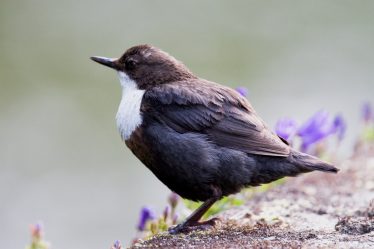Wildlife in Wicklow Bridges


The Wicklow Bridge Project was undertaken in 2012, the aim being to take a selection of bridges and culverts in county Wicklow and ‘audit’ them to assess whether they pose obstacles and/or opportunities for wildlife.
The project arose from an action of the County Wicklow Heritage Plan:
Undertake a survey of bridges and relevant culverts in County Wicklow to identify fauna usage and assess whether any impediments to passage exist, particularly in light of ongoing changes in climate and rainfall patterns etc. Use this information to carry out retrofitting of features such as nest boxes, fish baffles and mammal ledges wherever possible
While we may be more familiar with the architectural merits of our bridges (many of which are included on the Record of Protected Structures or the NIAH inventory) we may be less aware that the Irish Dipper nests on the undersides of bridges, launching itself into fast flowing rivers where it searches for invertebrates under the stones of the riverbed. Thought to have evolved as a cave dwelling bird, these days Irish Dippers nest almost exclusively on the underside of bridges.
Moving away from the upstanding structure of the bridge, and delving down to its foundations on the riverbed, ’scouring aprons’ , weirs and other man made structures can act as obstacles for migrating fish trying to get upstream to complete their life cycle such as salmon and trout, or weak swimmers such as lampreys.
Grey wagtails and otters are examples of other species which regularly use bridges for sheltering and resting.
The project was co-ordinated by the Heritage Office of Wicklow County Council in partnership with Inland Fisheries Ireland, Birdwatch Ireland and NPWS and was co-funded by The Heritage Council.
The results provide valuable baseline information for Wicklow on where bridges are providing good habitats for wildlife and where there are problems and sets out recommendations for remediation works.
One action which has been shown elsewhere in Ireland to assist dipper populations, is the provision of artifical nesting boxes on the underside of bridges. This action has been commenced in County Wicklow, follow “Top Gear For Wicklow Dippers” article to find out more.
The report also makes a series of recommendations for works to resolve impediment issues for fish life in watercourses. Inland Fisheries Ireland has prioritised work on the Tuckmill River catchment, so hopefully there will be more to report on this later in the near future.
Click on the pdf.s below to access the full reports.




No Comments
Add a comment about this page